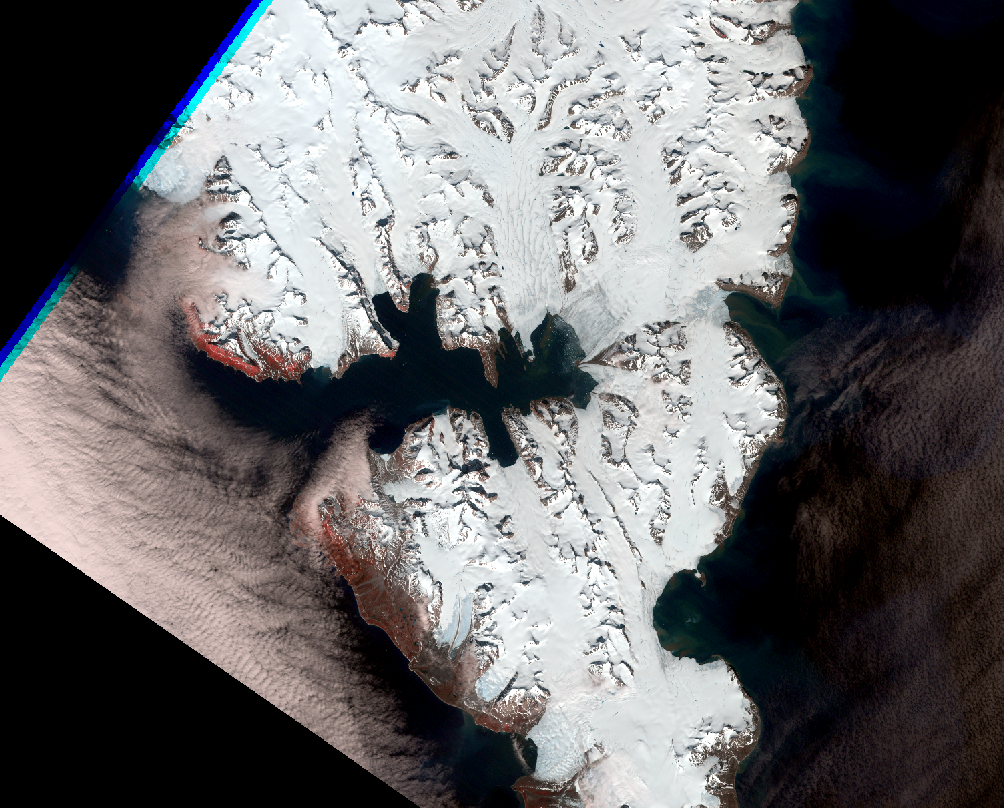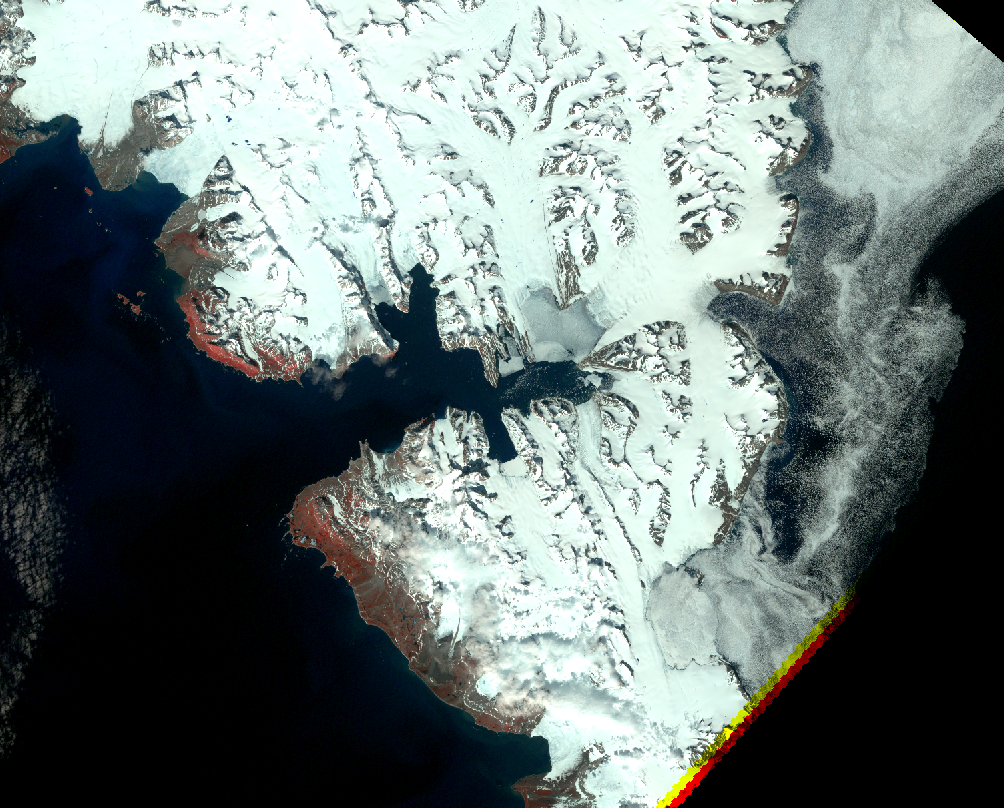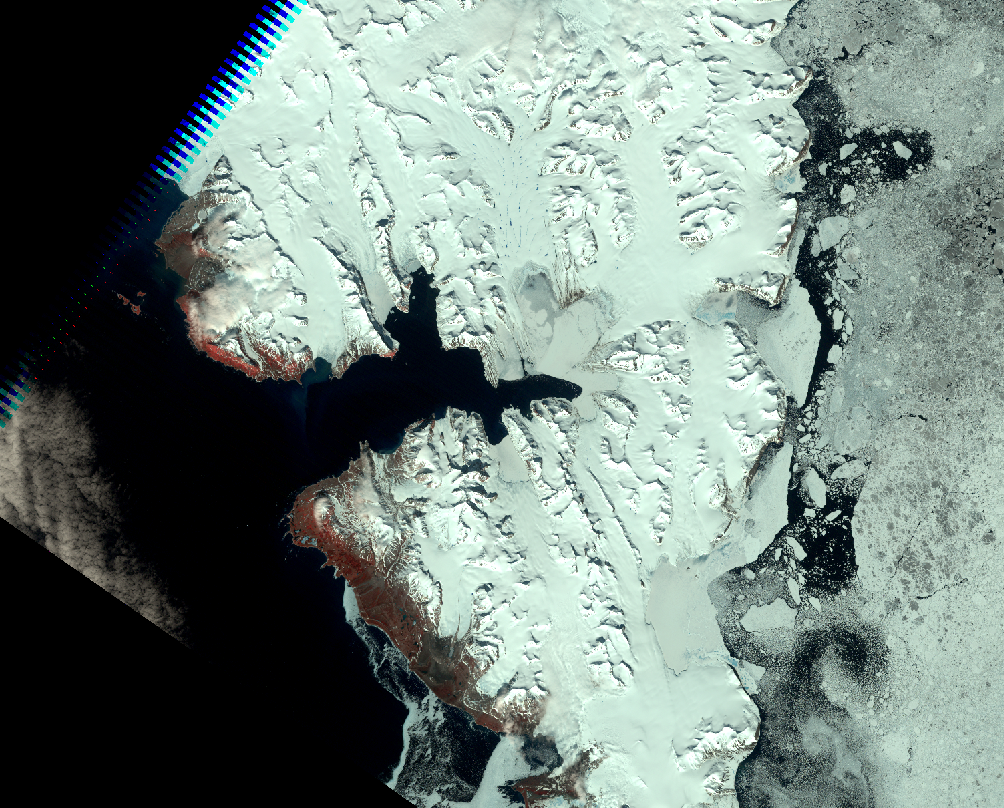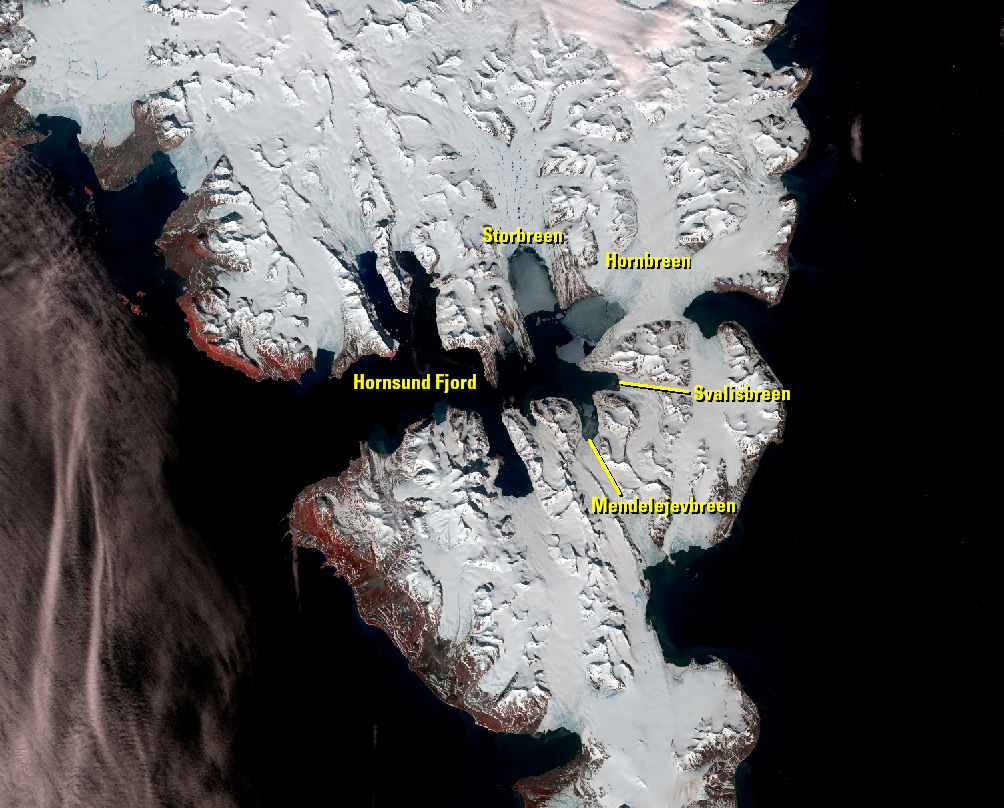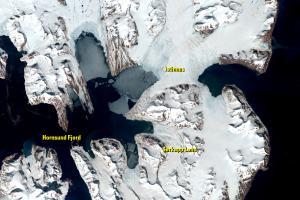
Svalbard, Norway
Earth Resources Observation and Science (EROS) Center - Earthshots
Fourteen tidewater glaciers flow into Hornsund Fjord, on the southern tip of Spitsbergen, the largest island of the Svalbard Archipelago, located about 700 kilometers north of mainland Norway in the Arctic Ocean. During the past few decades, these glaciers have retreated substantially.
In 1984, four glaciers formed a single terminus at the eastern end of Hornsund: Storbreen, Hornbreen, Svalisbreen, and Mendelejevbreen. By 2010, the glaciers had retreated far enough to each have a separate terminus into the fjord.
The main driver of this glacial retreat is increasing average temperatures. The melt season in Svalbard grew two weeks longer between 1912 and 2010.
The near-infrared imaging from Landsat clearly shows changes to these glaciers. The long record from Landsat is especially crucial to tracking the changes and projecting what may happen to the glaciers in the near future.
Imagery
Downloads
Atlas Obscura, 2019, Svalbard Satellite Station: Atlas Obscura, accessed July 3, 2019, at https://www.atlasobscura.com/places/svalbard-satellite-station.
Dobson, J., 2018, Arctic Space: K-Magazine, accessed July 3, 2019, at https://stories.kongsberg.com/content/arctic-space.
European Space Agency, 2019, Managing Signals at the Top of the World: ESA, accessed July 3, 2019, at https://www.esa.int/Our_Activities/Preparing_for_the_Future/Space_for_Earth/Arctic/Managing_signals_at_the_top_of_the_world/(print).
Laska, M., Barzycka, B., and Luks, B., 2017, Melting Characteristics of Snow Cover on Tidewater Glaciers in Hornsund Fjord, Svalbard: Water, v. 9, no, 10, https://doi.org/10.3390/w9100804.
Longyearbyen Bluesklubb, 2019, Kongsberg Satellite Services: Longyearbyen Bluesklubb, accessed July 3, 2019, at https://www.svalbardblues.com/svalbard/bedrifter/kongsberg-satellite-services/.
Pelto, M., 2017, Recent Climate Change Impacts on Mountain Glaciers: Oxford, Wiley, 217p.
Voiland, A., 2018, Losing Ice in Svalbard: NASA Earth Observatory, accessed July 3, 2019, at https://earthobservatory.nasa.gov/images/92325/losing-ice-in-svalbard.
Ziaja, W., and Ostafin, K., 2015, Landscape–seascape dynamics in the isthmus between Sørkapp Land and the rest of Spitsbergen—Will a new big Arctic island form? Ambio, v. 44, no. 4, p. 332–342, https://doi.org/10.1007/s13280-014-0572-1.
Ziaja, W., and Ostafin, K., 2019, Origin and location of new Arctic islands and straits due to glacial recession: Ambio, v. 48, no. 1, p. 25–34, https://dx.doi.org/10.1007%2Fs13280-018-1041-z.


